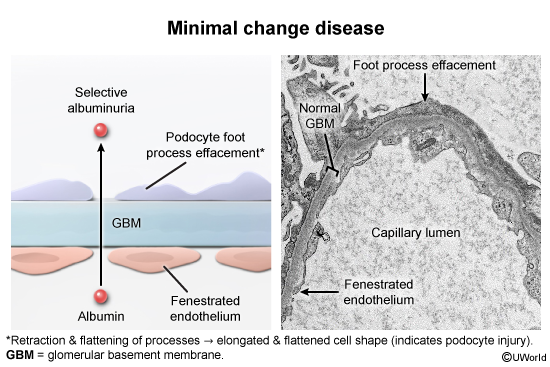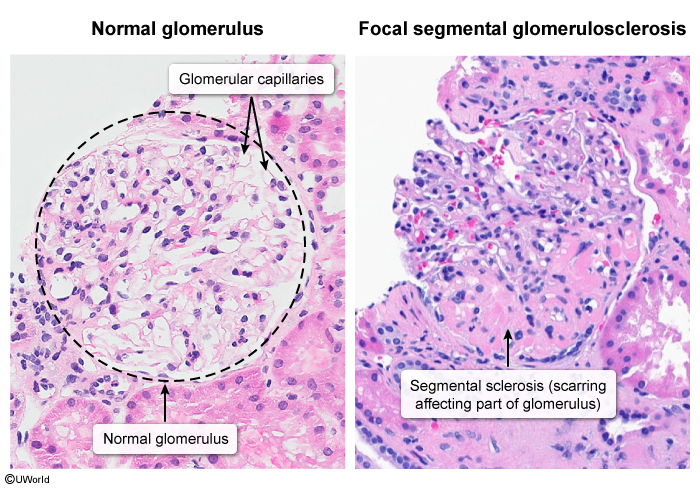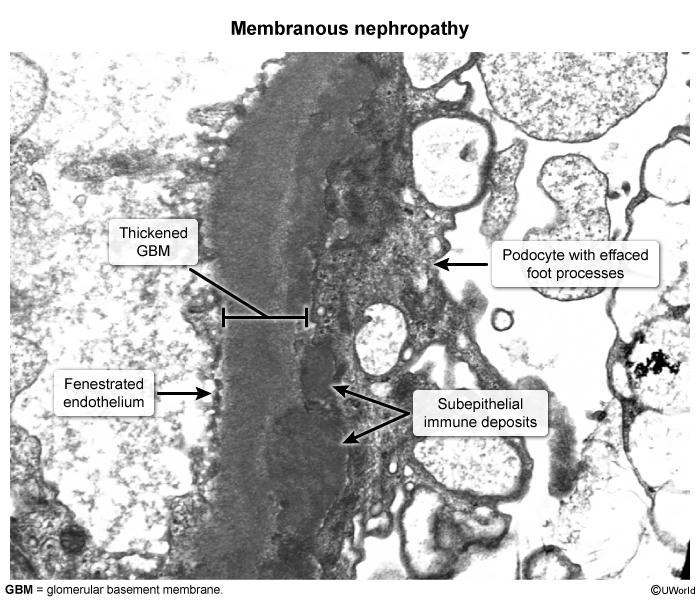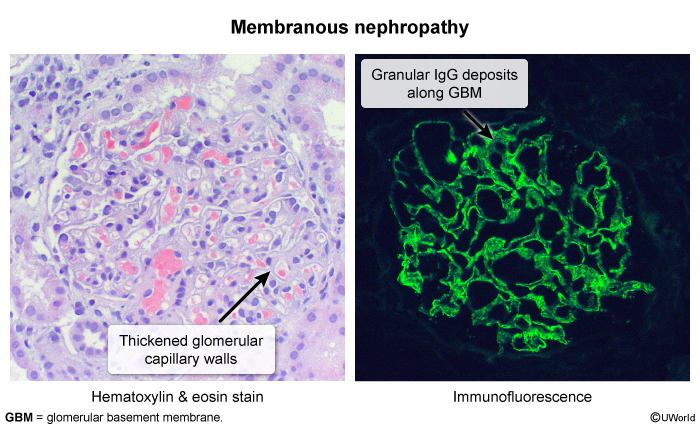Nephrotic Syndrome: A Comprehensive Overview
Article Sections
Introduction
Nephrotic syndrome is defined by heavy proteinuria (>3.5 g/day), hypoalbuminemia, and peripheral edema. It results from increased permeability of the glomerular filtration barrier (Figure 1), which is composed of capillary endothelial cells, the glomerular basement membrane (GBM), and specialized epithelial cells called podocytes. The underlying injury in nephrotic syndrome is noninflammatory and involves podocytes and the GBM without significant involvement of other glomerular structures; this is in contrast to the diffuse inflammatory damage seen in nephritic syndrome (discussed in a separate article).
Pathophysiology
In nephrotic syndrome, glomerular injury primarily affects the podocytes and is isolated from the inflammatory mediators in the circulation (Bowman space); therefore, it is noninflammatory. Podocytes play a crucial role in maintaining the selectivity of the glomerular filtration barrier, and their dysfunction allows proteins that are normally retained in the blood to pass through, resulting in significant
Continue Learning with UWorld
Get the full Nephrotic Syndrome: A Comprehensive Overview article plus rich visuals, real-world cases, and in-depth insights from medical experts, all available through the UWorld Medical Library.
Figures
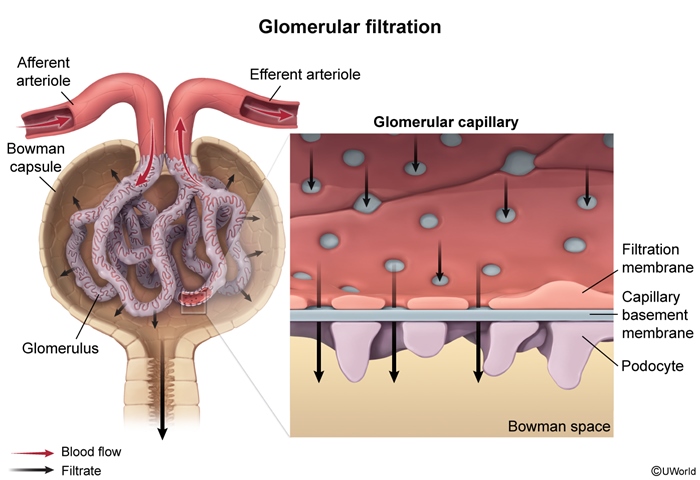
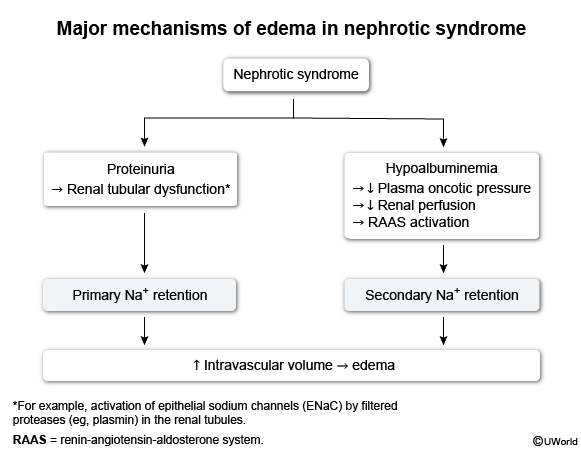
Images
